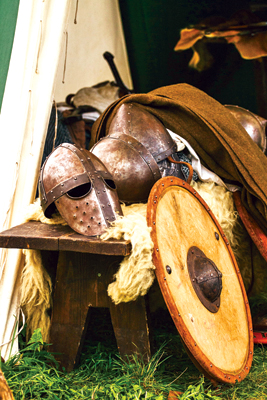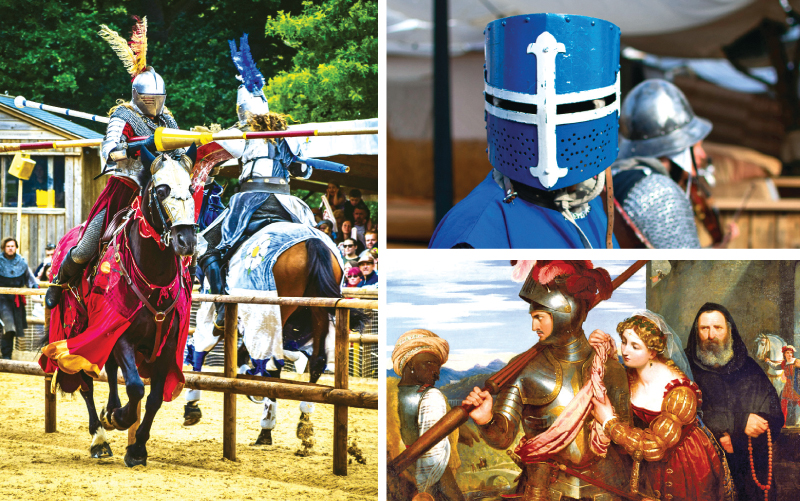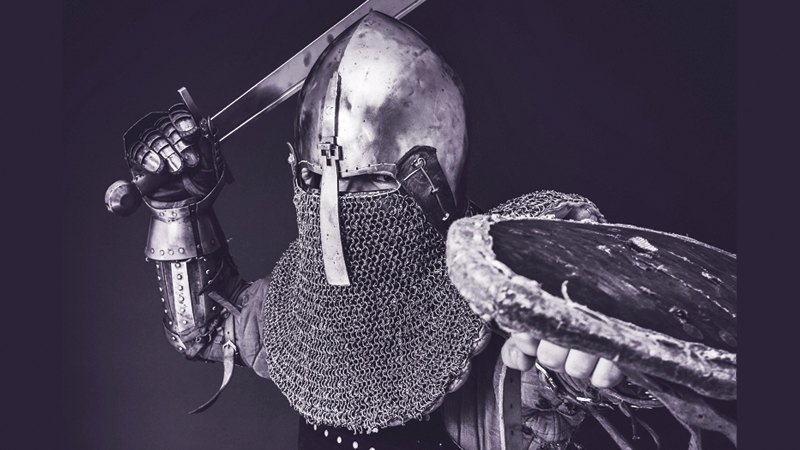The 12th century saw the proliferation of some common traditions associated with knight culture, such as tournaments and jousts which were formal contests of martial skill that helped knights hone their abilities and showcase their prowess
Knights, the chivalrous mounted heroes in shining armour, hold a significant place in both real medieval history and modern popular culture.
These epic heroes of legend represented the pinnacle of chivalric nobility and played a crucial role in the social, military, and cultural aspects of their time. Depicted in various forms of fiction, from historic medieval romances to contemporary media, knights embody the enduring idealistic appeal of honor, courage, and heroism.
Though knighthood is still granted as a prestigious honorary title, knights are primarily associated with iconography established in the medieval era, though it might be less than accurate to reality.
 The concept of knighthood existed long before the term did, emerging in the Early Middle Ages, around the 8th century during the reign of King Charlemagne. Originally, knights were simple dedicated cavalrymen armed with a spear or lance granted to them by ceremony, all important and lasting imagery associated with knights.
The concept of knighthood existed long before the term did, emerging in the Early Middle Ages, around the 8th century during the reign of King Charlemagne. Originally, knights were simple dedicated cavalrymen armed with a spear or lance granted to them by ceremony, all important and lasting imagery associated with knights.
Cniht
The term “knight” is derived from the Old English “cniht” meaning “servant” or “boy”, but through use, over time came to mean “military servant to the king,” used to denote a high social class of nobility.
Knighthood was not initially based on a strict code of chivalry but was more about military service and loyalty to a lord. As such, knights were known to abuse and terrorize the civilians of their own country.
With some extensive reformation of the knight system, the idea of chivalry, a code of conduct that emphasized virtues like loyalty, faith, courage, and courtesy, became closely associated with knighthood. The code of chivalry encouraged knights to protect the weak, serve their lords with unwavering loyalty, and uphold their honor.
The 11th to the 13th centuries marked the heyday of chivalry and the knight, during which knights played a crucial role in medieval warfare and were at the heart of military campaigns.
The 12th century saw the proliferation of some common traditions associated with knight culture, such as tournaments and jousts which were formal contests of martial skill that helped knights hone their abilities and showcase their prowess. These events were not just about combat but also about pageantry, manners, and courtly love.
By the late Middle Ages, standard infantry became more vital to the military than the cavalry, thanks to the widespread use of gunpowder and firearms. Chivalry as a concept soon fell out in favour of a more realistic approach to warfare. As cheaper and more effective alternatives to classically trained knights propped up throughout Europe, knights faded from the battlefield and into the background.
Decline of traditional role
Though the traditional role of knights declined, their legacy persisted in European culture. The earliest depictions of knights in fiction emerged in medieval romances, a literature genre that celebrated the time’s chivalric ideals. One of the most enduring and influential narratives in this genre is the Arthurian legend.
King Arthur, his Knights of the Round Table, and the quest for the Holy Grail have inspired countless tales to this day. Most of these legends are older than print and yet have remained timeless. Even the first considered modern novel, Don Quixote is a deconstruction of chivalric romance stories.
In the modern era, the image of the knight retains a special place in popular culture, continuing to symbolize the ideals of honor, heroism, and medieval glory.
However, modern pop culture has taken a more nuanced and critical approach when exploring the traditional tropes associated with the bygone age of chivalry, with popular media like ‘Monty Python’ and the ‘Holy Grail’, ‘Game of Thrones’, and much more. Despite this, knights have left a lasting mark on history as symbols of an age characterized by romanticism and martial prowess, serving as a reminder of an era where honour and valour were paramount.








